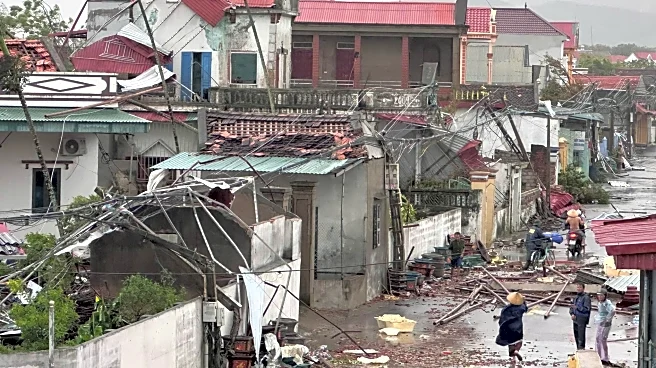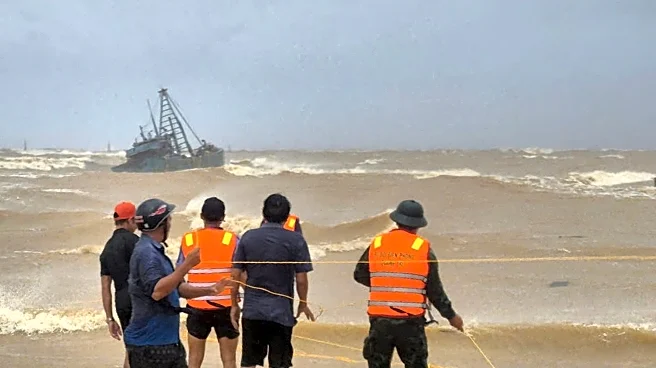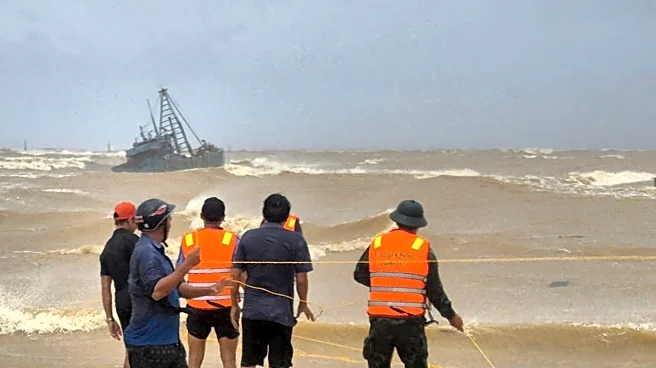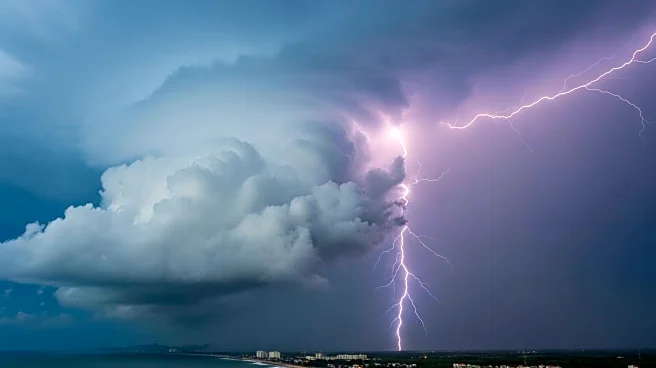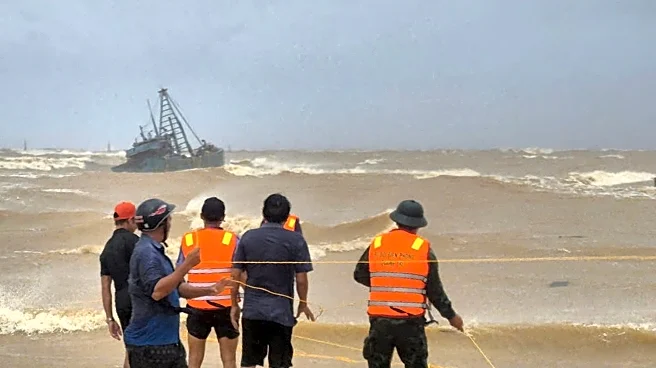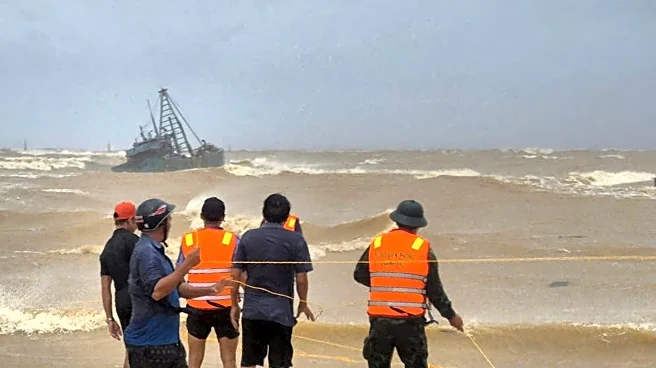What's Happening?
Typhoon Bualoi has made landfall in north-central Vietnam, resulting in at least six fatalities and significant damage to homes and infrastructure. The storm, which is the tenth typhoon to hit Vietnam this year, brought torrential rain and high seas, prompting the relocation of over 240,000 people from vulnerable coastal areas. Operations at four coastal airports, including Danang International Airport, were suspended due to the storm's approach. The typhoon packed winds of up to 82 miles per hour, causing destruction in several provinces and leading to search efforts for missing fishermen.
Why It's Important?
The impact of Typhoon Bualoi highlights the vulnerability of Vietnam's coastal regions to severe weather events. The storm's destruction of homes and infrastructure poses challenges for local authorities in terms of emergency response and recovery efforts. The suspension of airport operations affects travel and logistics, while the relocation of hundreds of thousands of residents underscores the human cost of such natural disasters. The typhoon's effects on Vietnam's agriculture and economy could be significant, as previous storms have led to substantial losses in these sectors.
What's Next?
Vietnamese authorities are focused on rescue and recovery operations, including clearing debris and restoring essential services. The government has issued warnings about potential flash floods and landslides, urging vigilance among residents. As the storm moves west into Laos, continued heavy rainfall is expected, which could exacerbate flooding and damage. The long-term recovery will involve rebuilding infrastructure and supporting affected communities, with potential international aid and cooperation.

